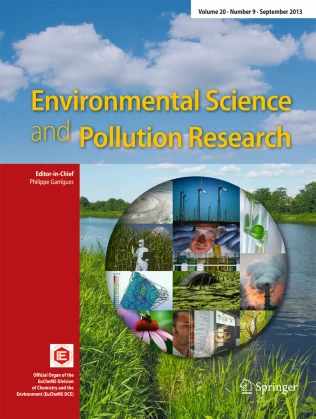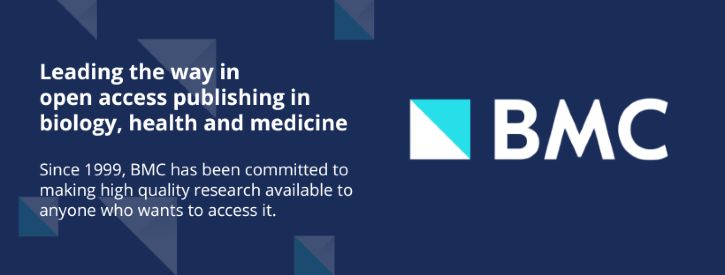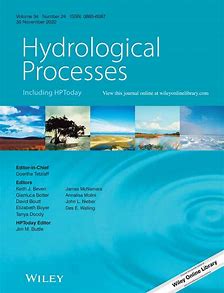Please find all scientific publications of IGB under > scientific publications
For more detailed information please refer to our > library catalogue
91 - 100 of 672 items

February 2025
Environmental Science and Pollution Research. - 32(2025), 6784–6803
Spatial distribution of nicotine concentrations in Berlin’s surface waters and their potential sources
Markus Venohr; Christine Beusch; Tobias Goldhammer; Hanh Hong Nguyen; Simone Podschun; Claudia Schmalsch; Christian Wolter
February 2025
Journal of Applied Ecology. - 62(2025)4, 1052-1062
The crucial role of ecohydraulic factors in triggering sturgeon reproduction: Implications for active habitat restoration strategies in the Yangtze River
Hao Du; Xuan Ban; Pengcheng Li; Wurong Shih; Panayiotis Diplas; Jinming Wu; Junyi Li; Peilin Cheng; Pengsheng Li; Wencheng Liu; Fengzhi He

February 2025
International Biodeterioration & Biodegradation. - 199(2025), Art. 106031
Improving bioavailability of lignocellulosic biomass by pretreatment with the marine fungus Chaetomium sp. CS1
Minghuang Ling; Ping Zheng; Xiaomei Huang; Gaili Fan; Huafeng Zhang; Zhijie Xu; Peiwen Zhuang; Changyou Wang; Hans-Peter Grossart; Kai Zhang; Zhuhua Luo
February 2025
Current Biology. - 35(2025)6, 1364-1372.e2
New fish migrations into the Panama Canal increase likelihood of interoceanic invasions in the Americas
Gustavo A. Castellanos-Galindo; Diana M.T. Sharpe; D. Ross Robertson; Victor Bravo; Jonathan M. Jeschke; Mark E. Torchin
The authors have compared the fish communities of Lake Gatun in the Panama Canal before and after the canal’s expansion in 2016: Marine fish species now make up 76 percent of the total biomass of the fish population and are primarily large predatory fishes. The lake’s food web is changing and local fisheries are impacted. There is also an increased risk of fishes colonizing the opposite ocean.
February 2025
Scientific Reports. - 15(2025), Art. 6237
Shedding light on dark taxa: exploring a cryptic diversity of parasitoid wasps affected by artificial light at night
Manuel Dietenberger; Andreas Jechow; Manuela Sann; Franz Hölker
February 2025
Ecology letters. - 28(2025)2, Art. e70074
Urban Environments Promote Adaptation to Multiple Stressors
Elizabeta Briski; Louisa Langrehr; Syrmalenia G. Kotronaki; Alena Sidow; Cindy Giselle Martinez Reyes; Antonios Geropoulos; Gregor Steffen; Nora Theurich; James W. E. Dickey; Jasmin C. Hütt; Phillip J. Haubrock; Ismael Soto; Antonín Kouba; Ross N. Cuthbert
February 2025
Science of the Total Environment. - 942(2024), Art. 173656
Network-based integration of omics, physiological and environmental data in real-world Elbe estuarine Zander
Raphael Koll; Jesse Theilen; Elena Hauten; Jason Nicholas Woodhouse; Ralf Thiel; Christian Möllmann; Andrej Fabrizius

February 2025
BMC Ecology and Evolution. - 25(2025), Art. 15
Come to the dark side – citizen science in nighttime ecology
S. E. Kimmig; F. Hölker; S. Schroer; A. Kassiem; S. Kiefer
February 2025
Hydrological Processes. - 39(2025)2, Art. e70084
Electrical Conductivity as a Tracer for Seasonal Reverse Flow and Transport of Trace Organic Contaminants in River Spree
Christoph J. Reith; Jörg Lewandowski; Anke Putschew; Tobias Goldhammer; Josefine Filter; Stephanie Spahr
The authors studied if the electrical conductivity can serve as a hydrological tracer to capture the intensity and duration of seasonal reverse flow phases in a specific section of River Spree. Moreover, they studied the effect of upstream transport on chemical water quality, i.e. on trace organic contaminant during these reverse flow phases.
February 2025
Conservation Biology. - 34(2025), 1559–1574
Amphibian conservation in Europe: the importance of pond condition
A. López‑de Sancha; D. Boix; L. Benejam; L. Briggs; T. A. Davidson; J. C. Fahy; V. Frutos‑Aragón; H. M. Greaves; P. Lemmens; T. Mehner; L. Martín; B. Oertli; C. Sayer; S. Brucet








